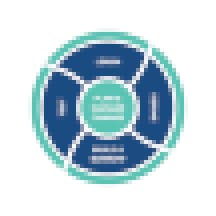There are over 132,000 school communities in the United States. Many have some innovative programs at their edges, but few have redesigned the core of school in a meaningful sense, or in ways that meet the needs of diverse learners, equity and a radically shifting economy. Meanwhile, billions of dollars have been spent on edtech by these same school communities. By and large, these investments have only served to reinforce the status quo. But there may be an alternative.
Today’s edtech market is radically fragmented. Purchasing decisions happen at all levels from districts to schools to individual classrooms to parents. All of these consumers frequently purchase solutions that address a specific need, and then other solutions that address other needs. It’s as if you’re furnishing your house one piece at a time with no thought to how they fit together. And edtech companies cater to this fragmentation in their product design and marketing. By targeting individual teachers as their primary customers, they encourage further fragmentation at the school site level—as if each person living in a house were tasked to decorate one room in whatever style they wished.
How might we escape this vicious fragmentation? And more to the point, how can edtech catalyze and accelerate a redesign of school itself?
The Challenge: Developing a New School Blueprint
To answer those questions, we first need to understand where the root cause of fragmentation lies: in the core design of school itself. After all, before we furnish the house, we need to design its structure and build it.
A school is a system, but it’s rarely designed and built systematically. Different experts may be charged with building the pieces or elements of the school. The architect and engineers design the building whose constraints then impact the teachers who create the curriculum, and the assistant principal who builds out the master schedule, which in turn impacts the curriculum. And on it goes. Everyone is continually adjusting and adapting to elements that others have set in motion, but rarely is there clarity on school as a holistic system, as a living blueprint whose elements can be thoughtfully changed with foresight. After all, one change impacts another.
A whole school blueprint, however, recognizes that for a school to change its community needs make collective decisions around what they want their “schoolhouse” to become. They need to discuss their mission and goals, as well as what their graduates will look like—and what they’ll be capable of doing when they leave. And, crucially, they’ll need to define what success looks like. Thus, redesign must begin as a human engagement that gives life and spirit to the blueprint. This may sound intense, but we’re seeing it happen in our work all over the country.
Below is a simple, clear proposal of what a whole school blueprint might look like. Included are the core system elements of a school, all of which impact one another but which currently live in siloed spaces.

The Role of Edtech: Connecting the Pieces
So where does technology come in? Edtech can enable and house the holistic blueprint. Currently, each system element lives in a different place. Curriculum and instructional materials live on websites, in the cloud, on paper, in LMS’s, in Google Drive or OneDrive. Student information, grades and schedules live in an SIS. The fact that there isn’t a place to access all components of the core design of a school makes it hard to implement anything new while considering the impact on the entire structure.
Generally, a design choice or change in one element necessitates shifts in other elements—as anyone who has built a master schedule well knows. These changes are often made manually, whether on paper or through log-ins to multiple platforms. All these inefficiencies operate as drag on the system; they encourage inertia and stasis rather than change and innovation. It’s so much easier to repeat what you did last year than think through and enact change in all the impacted system elements. And for schools that try new things, it is only feasible to try one big new thing each year because of how much work it takes to negotiate changes within all of these system elements.
This is why we think significant investment from the edtech community to find a solution to this siloing could fundamentally accelerate innovation in K-12 schooling, and thereby defragment the market for edtech.
This could look like large master platforms that do everything, but more likely will be a stack of interoperable tools that all talk to each other, sharing data and information. (A stack is simply the set of tech tools, software, and data standards and frameworks that an organization uses to get its daily work done.)
For this to happen, it will require new data standards for the remaining system elements, as well as funding for new startups, attracting new talent, and many more intentional and collaborative steps in the field. There are many great edtech tools out there that will give us a head start, and the current efforts in interoperability and data standards (IMS Global, Ed-fi, xAPI) as well as the work of Project Unicorn will help.
The Challenge: Continuous Learning and Redesign
While such an interoperability and integration endeavor would be a game changer, it still doesn’t go far enough. Schools are not static systems. And in a rapidly changing economy, they will need to redesign continually; they will need to remain much more agile than their current structure permits. Continuous learning is the fundamental state of the future workforce.
Just like the blueprint process described above, continuous learning and agility starts with humans, not technology. School communities need to grow a culture of innovation, which includes growing educators’ capacities to design, build, test, and collaborate.
In our work supporting communities in creating innovative learning environments, we have found that we can build a culture of innovation by putting research and development (R&D) cycles into the heart of the redesign process. The last two decades of change initiatives have often failed because they were top-down, or relied on supplemental, outside support that didn’t grow schools’ local capacity for designing, planning and managing change. But putting R&D cycles in the center of the work can change all that. The process follows a specific set of steps, helping schools plan, learn, define, borrow and build, and test the many pieces that will make the school an interconnected, coherent whole. Most importantly, it gives them the tools to keep moving their work forward as the world and the needs of their community change.

What does an R&D cycle have to do with the Blueprint we presented above? Let’s look at an example. A couple years ago, Van Ness Elementary in D.C. Public Schools decided to build and implement a social-emotional learning program. They built some of their own components, leveraged work from Conscious Discipline and are constantly learning and improving the model.
In addition to the actual curriculum and materials, the program impacted schedules, adult learning opportunities, the budget and many more system elements. Unfortunately, all of this has to be done manually using emails and large documents to describe the system element shifts necessary to implement the model. In an ideal scenario, R&D and continuous learning would be baked into the Blueprint so schools can pilot and implement new things and clearly see how they will impact the rest of the system elements of the school.
The Role of Edtech: New Tools for New Tasks
As the D.C. example shows, schools are not just a system but a complicated system. The connections between elements are more than linear, and the interoperable Blueprint stack needs to be connected to an equally interoperable R&D stack. We need to build R&D into the heart of the blueprint core stack to enable schools to plan and manage change both in their initial redesign journey and continuously as they go forward.

The steps of the R&D process should look familiar to people in any industry. There are many current tools that help during each stage, such as those for project management, data storage and analysis, knowledge management and learning and assessment. (Think: communication tools like Slack and Remind for planning and managing change.)
We believe that these tools, as well as new ones, should be integrated and interoperable with the same tools used in the Blueprint above. That way schools like Van Ness Elementary can more easily try new things, consider their impact on the whole school, and learn from them. The following are examples of tasks that need to be accomplished in each stage of the R&D process, which require integrated and interoperable tools.

Next Steps
The vision outlined above—really a blueprint for sector redesign—will require a tremendous amount of work and dedicated resources. The sector itself needs to be de-siloed so that edtech companies don’t work in isolation from schools/systems, who don’t work in isolation from redesign experts.
For this type of sector-transforming edtech to come into being, we need to create collaborative “build” partnerships—where edtech companies come together with school design organizations and innovative schools and school systems. In these partnerships the collaborators will themselves be going through research and development cycles to create functional, integrated products that can scale because they support the core redesign of school via its system elements. Only through such rigorous testing and iterating will edtech be able to create viable markets and finally reach its full transformative potential.


